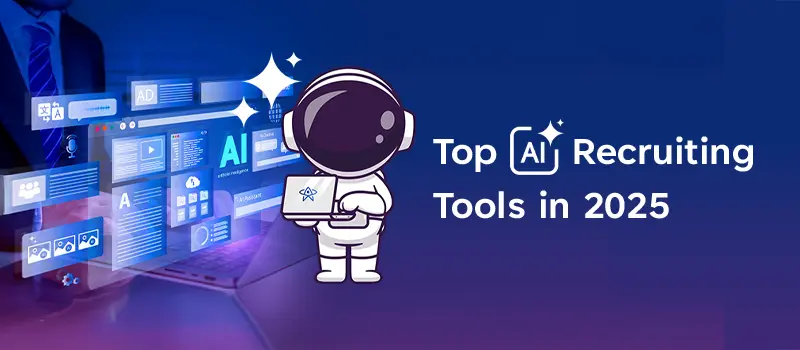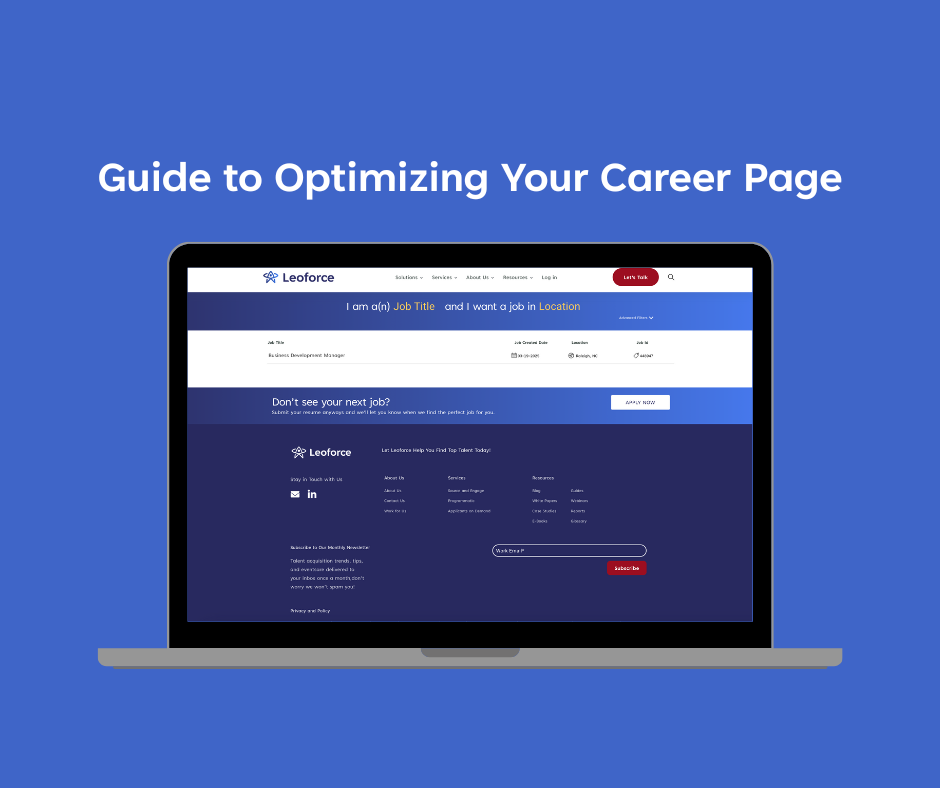Webinar recap: Accommodating neurodivergent candidates

Even as recruiters struggle to fill highly skilled jobs, 85% of neurodivergent people are unemployed or underemployed. With their ability to make exceptional contributions in a variety of roles, we need to take a look at the barriers that keep recruiters from engaging with this promising talent pool. And, critically, what is keeping neurodivergent candidates out of the workplace?
That was the subject of a June 30th webinar hosted by Leoforce, where I joined neurodiversity experts to explore the issue.
The diverse panel featured a bunch of neurodivergent folks, including myself, with a broad range of experiences in the workplace and who have made it their lives’ work to actively help neurodivergent people get hired, develop skills, and integrate into the workplace.
A rundown of our panelists
- Tiffany Jameson, Managing Partner at inclusion consultant grit & flow (ADHD + parent to two neurodivergent children)
- Manu Sekar, CEO of HashHackCode, which trains neurodivergent people to code.
- Jim Hogan, VP of Accessibility in Technology at Google (Autistic)
- Alice Rowan (me), ex-member of the traditional workforce, now self-employed copywriter (ADHD + Autistic)
- Bob Michael, Marketing Director at Leoforce (panel moderator)
Why explain the panelists’ neurodivergences? Because it’s important to understand that the panel represents lived experience, rather than just being “experts” looking from the outside in.
What does neurodivergent mean?
Neurodivergent is an umbrella term to describe people whose mental framework diverges from the “norm”. Neurodivergences include a set of neurodevelopmental differences such as Autism (ASD), ADHD, Tourette’s, Down Syndrome, and learning difficulties like dyslexia and dyspraxia.
In the webinar, you’ll also hear the term “neurodistinct” mentioned a few times. This has the same meaning as neurodivergent.
And finally, neurotypical refers to anyone who isn’t neurodivergent.
Neurodivergent talent is historically disadvantaged in hiring
As someone who struggled, undiagnosed, through the traditional workforce for over a decade, I can understand why we’re often overlooked.
A lot of discrimination against neurodivergent people, and autistic folks in particular, happens because of their outwardly presenting behaviors. The ways in which we don’t fit into neurotypical society.
As a recruiter or hiring manager, have you ever rejected a candidate because:
- They talked to an excessive degree
- They were late to the interview
- They struggled to sit still
- They didn’t make much, if any, eye contact
- They refused a handshake, or had a “weak” handshake
- They asked a lot of questions. Particularly clarifying questions, as if they didn’t understand your questions or a task that was set
- They didn’t complete a time-pressured task or misinterpreted the brief
I have been rejected from jobs for all the reasons above. And at the time, I had no idea I was neurodivergent. I discussed my experiences with the hiring process (both in-person and remote) in the webinar. A key point to take away is this:
Girls, women, and gender-nonconforming people are much more likely to discover their neurodivergences later in life. I was 28 when I found out.
Worth a read: “Barriers that keep applicants out of the workforce”
Helping neurodivergent folks integrate fully into the workplace starts by educating recruiters and managers to be aware of those unconscious biases.
Key takeaway
In your job ads and diversity statements, invite job applicants to state their needs, and ask for flexibility and accommodation. We cannot wait for people to “declare” or request accommodations for specific disabilities in the interview process. They may not even know they need them.
Recruit with kindness
We got a lot of questions in the webinar, understandably, about what accommodating neurodivergence looks like.
The panelists had a number of suggestions. But Jim Hogan of Google summarized it perfectly: just be kind to one another.
He went on to explain that while the unemployment rate is saddening, what’s even worse is that 70% of autistic folks who do find employment are bullied in the workplace. He was part of the 70% (as was I) and explained that throughout the first 37 years of his career he was bullied relentlessly.
After having experienced this throughout much of his career, Jim’s main goal at Google has been to create psychological safety for every job applicant and employee. He has worked to create an environment in which neurodivergent folks can start to tell their stories without fear of rejection or ridicule in the workplace.
We have to create environments and cultures that are ready to accept neurodivergent people. Leaders like Jim or Manu can do as much work as they want to prepare autistic and neurodivergent candidates for the workplace. But without the right culture in place, their quality of life is going to get much worse and burnout will soon be on the way.
Key takeaway
Focus on creating a culture of safety and openness. Begin with line managers who care, check in on their people regularly, and recognize the importance of their employees as people, not productivity machines.
Believe it or not, this is just the tip of the iceberg. If you would like to watch the full discussion, you can.
Something worth flagging here is that neurodiverse and neurodivergent don’t meant the same thing.
Manu made this point in the webinar. A group of people with different neurotypes are neurodiverse. An individual is neurodivergent.
How will you accommodate neurodivergent candidates during the hiring process?





